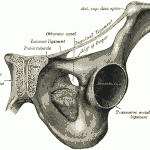 Groin pain can be directly related to the psoas major through the inguinal
Groin pain can be directly related to the psoas major through the inguinal ligament. Clients come to me with all manners of pain. Back pain, hip pain, knee pain, shoulder pain, groin. To be hyperbolic, which is my favorite way to be, I always say- It’s your psoas. I am only half joking. An unhappy psoas major prevents the rest of the body from being content.
ligament. Clients come to me with all manners of pain. Back pain, hip pain, knee pain, shoulder pain, groin. To be hyperbolic, which is my favorite way to be, I always say- It’s your psoas. I am only half joking. An unhappy psoas major prevents the rest of the body from being content.
There is plenty of knee pain that is directly related to the knee as well as back pain limited to a disc in the spine but there are certain common pains that I find to be associated with the psoas major though the pain radiates from a different part of the anatomy.
The inguinal ligament connects from the anterior superior iliac spine (ASIS) of the ilium to the pubic tubercle of the pubic bone. It passes right above the psoas major essentially strapping it into place. Interestingly, the function of a ligament is to connect one bone to another bone. As you see in the pictures above, the inguinal ligament is connecting to the same bone. To digress a bit, when you are born the ilium and the pubis, along with the ischium are separate bones that fuse over time. So, technically, the argument can be made that the ligament is connecting two separate bones that have simply fused into one.
Back to the psoas major and groin pain. As I said, the inguinal ligament basically runs over the psoas strapping it across the rim of the pelvis. One of the common pains that I mentioned earlier was a wrapping pain that tends to run from the pubic bone up and around the groin to the hip and the lower back. Over time I have come to think that this wrapping pain is a tight psoas major pushing on the inguinal ligament causing the discomfort.
